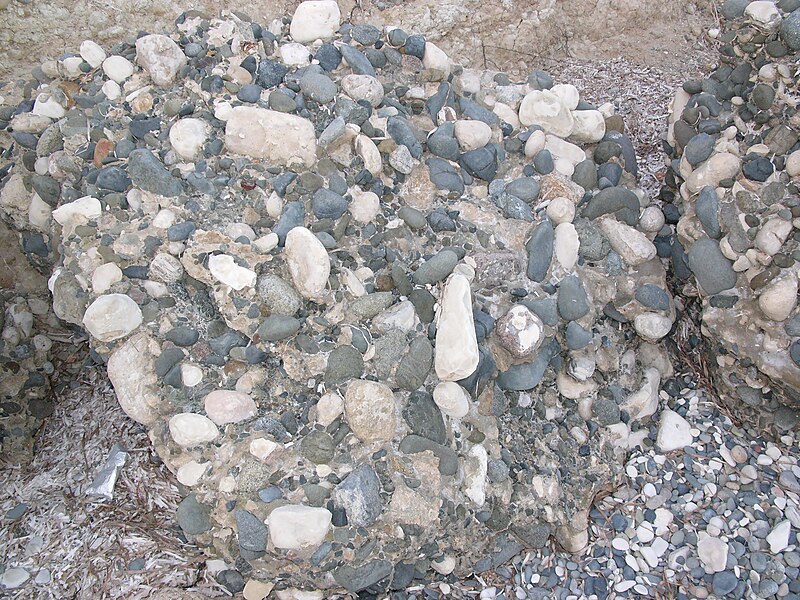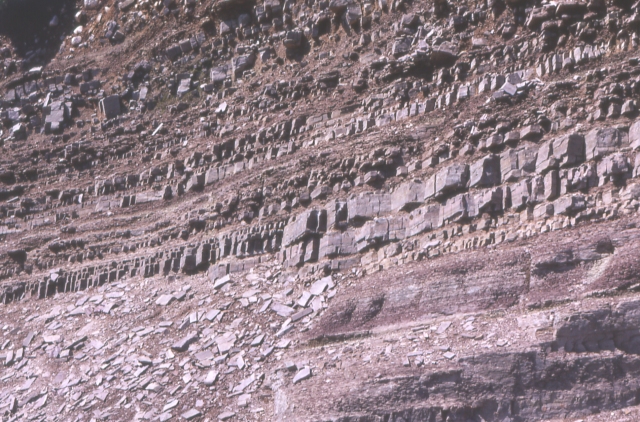Maybe you have heard of the Witwatersrand in South Africa
 |
| Conglomerate the gold in this rock is usually found in the cement holding the pebbles together. Photo by Hannes Grobe |
The Witwatersrand is not the only deposit of conglomerate in the world that contains gold. In the area around Timmins Ontario there are also mines that produce gold from ancient conglomerates of Archean age between 2.8 M2 .6 billion years old. It is not only gold that these ancient conglomerates are apt to contain a common Association in rocks of this type are uranium mineralization. This is been taken advantage of at Elliot Lake , Ontario Toronto , Ontario Elliot Lake , Ontario
 |
| Sandstone in a red bed that has been cemented and stained by iron oxide. Photo by Anne Burgess |
Ancient conglomerates are not the only place where gold can be found in sedimentary rocks as detrital gold is also found in many types of sandstone as small grains, and can even be found in fine-grained shale as microscopic particles that are too small to be seen with the naked eye. This kind of gold was never recovered until recently when Newmont Mining developed the gold deposits of the Carlin Trend in northern Nevada
Most of those miners that are working with placer gold deposits in the rivers and streams of the world or along the beaches are also dealing with a type of detrital gold deposit in the form of specs of gold to have been eroded from hard rock and have been swept down river by the action of running water to where we can find them in the gravel deposits of the stream bed.
Conglomerate is nothing other than stream gravel that has become fossilized over time; just about any time you find conglomerate when you are prospecting it is a good idea to have a very careful look at the deposit. This also applies to sandstone and shale since they are also sedimentary rocks that have been produced by the action of running water.


Very informative and helpful, thanks, John!
ReplyDeleteBullion Exchanges is a reputable Bullion Retailer located in the heart of New York City's Diamond District.
ReplyDeleteBullion Exchanges have a wide inventory of items like, bullion that range from the popular gold & silver to platinum & palladium.
They are offering a wide selection of products appealing to 1st time buyers and for seasoned investors.